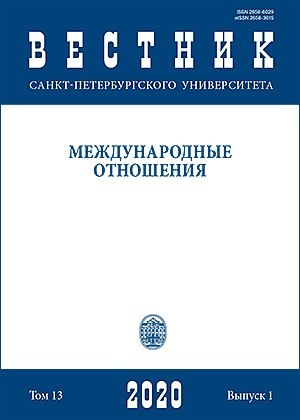Evaluation of the sub-regional integration of the Greater Mekong Sub-region (GMS) and its effects on Thailand’s domestic economy
DOI:
https://doi.org/10.21638/spbu06.2020.107Аннотация
This paper aims to investigate the sub-regional integration dynamics exhibited in the Greater Mekong Sub-region (GMS) process and its impact on Thailand’s economic development. Subregionalism assumes that sub-regional integration processes are based on geographic proximity, local business and governmental actors, and a shared historical and cultural awareness. The GMS includes Cambodia, China, Laos, Myanmar, Thailand and Vietnam, which have been engaged in this cooperation since 1992. Among these countries in Southeast Asia, Thailand has the largest economy, and it has a strong interest in supporting sub-regional integration with the GMS countries, because it includes Thai national economic development policy and government projects, which are also supported by Thailand’s business sector. Indeed, there are clearly observable economic impacts, since Thailand’s border regions profit from a growing trans-border economy between Thailand and the other GMS countries. This paper will examine how the GMS Strategic Framework (SF) II (2012–2018) relates to Thailand’s development strategies and will analyse the implications with regard to economic corridor and transport development in the context of the 2012–2018 strategy. Such an enquiry is especially relevant considering that Thailand promotes the development of economic corridors and the facilitation of cross-border economic activities to link with neighbouring countries in terms of trade, investment, and tourism. However, by placing these developments in a contemporary historical context, we also have to evaluate Thailand’s early approaches to sub-regional integration processes within the Mekong area.
Ключевые слова:
Asian sub-regionalism, Mekong Sub-region, Thailand economic development
Скачивания
Библиографические ссылки
Загрузки
Опубликован
Как цитировать
Выпуск
Раздел
Лицензия
Статьи журнала «Вестник Санкт-Петербургского университета. Международные отношения» находятся в открытом доступе и распространяются в соответствии с условиями Лицензионного Договора с Санкт-Петербургским государственным университетом, который бесплатно предоставляет авторам неограниченное распространение и самостоятельное архивирование.




